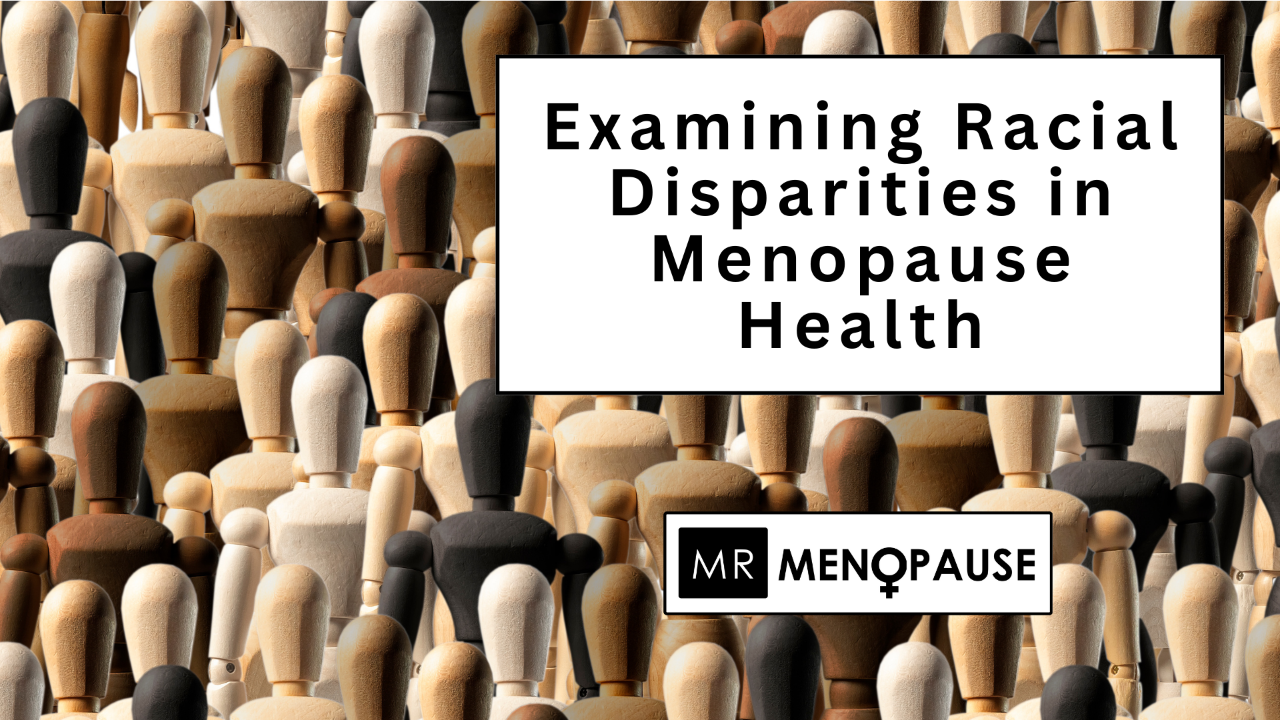
Examining Racial Disparities in Menopause Health
Menopause is a natural stage that marks the end of a woman's reproductive years. Although it is a universal experience for women worldwide, the journey through menopause is not the same for everyone. In recent years, it has become increasingly clear that there are significant racial disparities in menopause health that deserve attention and action. These disparities have vast implications for the well-being of women of color, and it is crucial to understand and address them to ensure equitable healthcare for everyone.
Menopause typically occurs between the ages of 40-60, although it can happen earlier or later for some women. It is defined as the end of menstruation and is followed by various physical, mental, and emotional symptoms. Symptoms include hot flashes, night sweats, mood swings, weight gain, sleep disturbances, vaginal changes, and more.
Racial Disparities in Menopause Health
Healthcare Access and Quality:
One of the most significant factors contributing to racial disparities in menopause health is unequal access to healthcare and differences in the quality of care provided. Women of color are more likely to face barriers such as limited access to healthcare facilities, lower health insurance coverage rates, and a lack of culturally competent care. These barriers can delay the diagnosis and treatment of menopause-related symptoms and conditions.
Socioeconomic Factors:
Socioeconomic status plays a large part in determining the experience of menopause. Women of color are more likely to have a lower socioeconomic status, which can exacerbate menopause-related health disparities. Limited financial resources can hinder access to healthcare, proper nutrition, and lifestyle modifications that can help manage menopause symptoms.
Health Literacy:
Health literacy is about an individual's ability to understand and use health information and is vital for determining health outcomes. Racial disparities in health literacy can lead to differences in menopause-related knowledge and self-care practices. Women of color may have less access to educational resources about menopause and its management, which can result in suboptimal self-care and health decisions.
Cultural and Social Stigma:
Cultural and social factors can influence how menopause is perceived and experienced within different racial and ethnic groups as well. Some communities may have stigmatized views of menopause, affecting women's willingness to seek help or discuss their symptoms openly. Additionally, cultural norms and expectations may shape how menopause is managed and discussed within families and communities.
Hormone Replacement Therapy (HRT):
Hormone replacement therapy, which can help alleviate some menopause symptoms, has been controversial due to its potential risks and benefits. Racial disparities exist in the use of HRT, with some studies suggesting that women of color are less likely to receive this treatment, possibly due to concerns about side effects or a lack of healthcare provider recommendations.
How To Address Racial Disparities in Menopause Health
Improve Access to Healthcare:
Efforts should be made to increase access to healthcare services for women of color, particularly those from marginalized communities. This includes expanding health insurance coverage, increasing the number of healthcare providers in underserved areas, and offering culturally competent care.
Education and Awareness:
Promoting menopause education and awareness campaigns that are culturally sensitive and inclusive can help bridge the knowledge gap. Providing information about the physical and emotional changes associated with menopause, available treatment options, and the importance of seeking care can empower women to make informed decisions about their health.
Research and Data Collection:
More research is needed to better understand the specific needs and experiences of women of color during menopause. This includes gathering data on the prevalence of menopause symptoms, access to healthcare, and treatment outcomes across different racial and ethnic groups.
Culturally Competent Care:
Healthcare providers should receive training in cultural competency to ensure that they can effectively communicate with and understand the unique needs of diverse patient populations. This can help build trust and improve patient-provider relationships.
Racial disparities in menopause health are a pressing issue that deserves increased attention and action. Addressing disparities in menopause requires a multi-faceted approach that includes improving healthcare access, increasing education and awareness, conducting research, and promoting culturally competent care. By working together to eliminate these disparities, we can ensure that all women, regardless of their race or ethnicity, have access to the resources and support they need to navigate the menopausal transition with dignity, grace, and good health.

